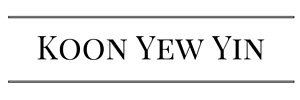(This post was originally published at klse.i3investor.com)
My main aim in writing this piece is help you understand the difficulty of becoming a super investor. In my previous article ‘Why some of us cannot become super investors’, I have pointed out the 7 traits which you must overcome. Even if you can master all of them, the road to success has many obstacles and the biggest one is fear. Even if you have the knowledge, do you dare to commit so much money? Do you dare to buy with margin loan?
Even if you have the guts to put so much money at risk, there will still be so many people disagree with you and some will try their best to discourage you. They themselves do not have a good track record, want you to follow their advice. Beware of such people especially those stupid idiots who ridiculed me with abusive language.
From the few hundreds of commentaries of my articles, I notice that most of them do not agree with my selection of Jaya Tiasa, yet I dare to buy more than 40 million shares. Am I a fool? Where can I hide my face if Jaya Tiasa could not perform?
The fact that there are so many people disagree with me, is quite reassuring of my own judgment. I recall that in 1984 when the Hong Kong market crashed, all my friends said that I was mad to buy HK shares when the Communists would take over HK. I ignored their opinion and I made so much money that I eventually bought 46% of a stock broking company in Hong Kong.
I think most people are confused and cannot think clearly. As a result they cannot select good shares that can perform. They even doubt my sincerity. My intention is noble and altruistic.
Statistics shows that most fund managers cannot beat the market index because they cannot buy shares that are currently not showing good profit even they have tremendous profit growth prospect, like Jaya Tiasa. Sad to say that most investors also consider P/E ratio is the most important share selection criterion. As a result they miss buying really good shares with poor current profit but they have good future.
Most investors and professionals concentrate too much on fundamental and technical analysis and they do not think like a businessman.
What is the difference between fundamental and technical analysis?
These terms refer to two different stock-picking methodologies used for researching and forecasting the future growth trends of stocks. Like any investment strategy or philosophy, both have their advocates and adversaries. Here are the defining principles of each of these methods of stock analysis:
Fundamental analysis is a method of evaluating securities by attempting to measure the intrinsic value of a stock. Fundamental analysts study everything from the overall economy and industry conditions to the financial condition and management of companies.
Technical analysis is the evaluation of securities by means of studying statistics generated by market activity, such as past prices and volume. Technical analysts do not attempt to measure a security’s intrinsic value but instead use stock charts to identify patterns and trends that may suggest what a stock will do in the future.
In the world of stock analysis, fundamental and technical analysis are on completely opposite sides of the spectrum. Earnings, expenses, assets and liabilities are all important characteristics to fundamental analysts, whereas technical analysts could not care less about these numbers. Which strategy works best is always debatable.
What is the “random walk theory” and what does it mean for investors?
The random walk theory is the occurrence of an event determined by a series of random movements – in other words, events that cannot be predicted.
Applying the random walk theory to finance and stocks suggests that stock prices change randomly, making it impossible to predict stock prices. The random walk theory corresponds to the belief that markets are efficient, and that it is not possible to beat or predict the market because stock prices reflect all available information and the occurrence of new information is seemingly random as well.
The random walk theory is in direct opposition to technical analysis, which contends that a stock’s future price can be forecasted based on historical information through observing chart patterns and technical indicators.
Conclusion: Now you are more confused than before but you can understand why most investors cannot beat the market index. I think the best way is to select shares like a businessman. He can always see the profit potential of a good business. He has the power to SMELL PROFIT.
I am obliged to tell you that JT is my major holdings and I am not asking you to buy. But if you buy, I am not responsible for your loss or profit.
For your information, JT has performed better than the KLCI since the start of 2014.
About 15 people wanted to meet me. I have fixed it on 16th Feb 2014 Saturday 11 am at the Club House, Meru Golf Resort, Jelapang, Ipoh.
All those who are interested are welcome. If you write to me [email protected], I will arrange a good lunch for you free of charge.
